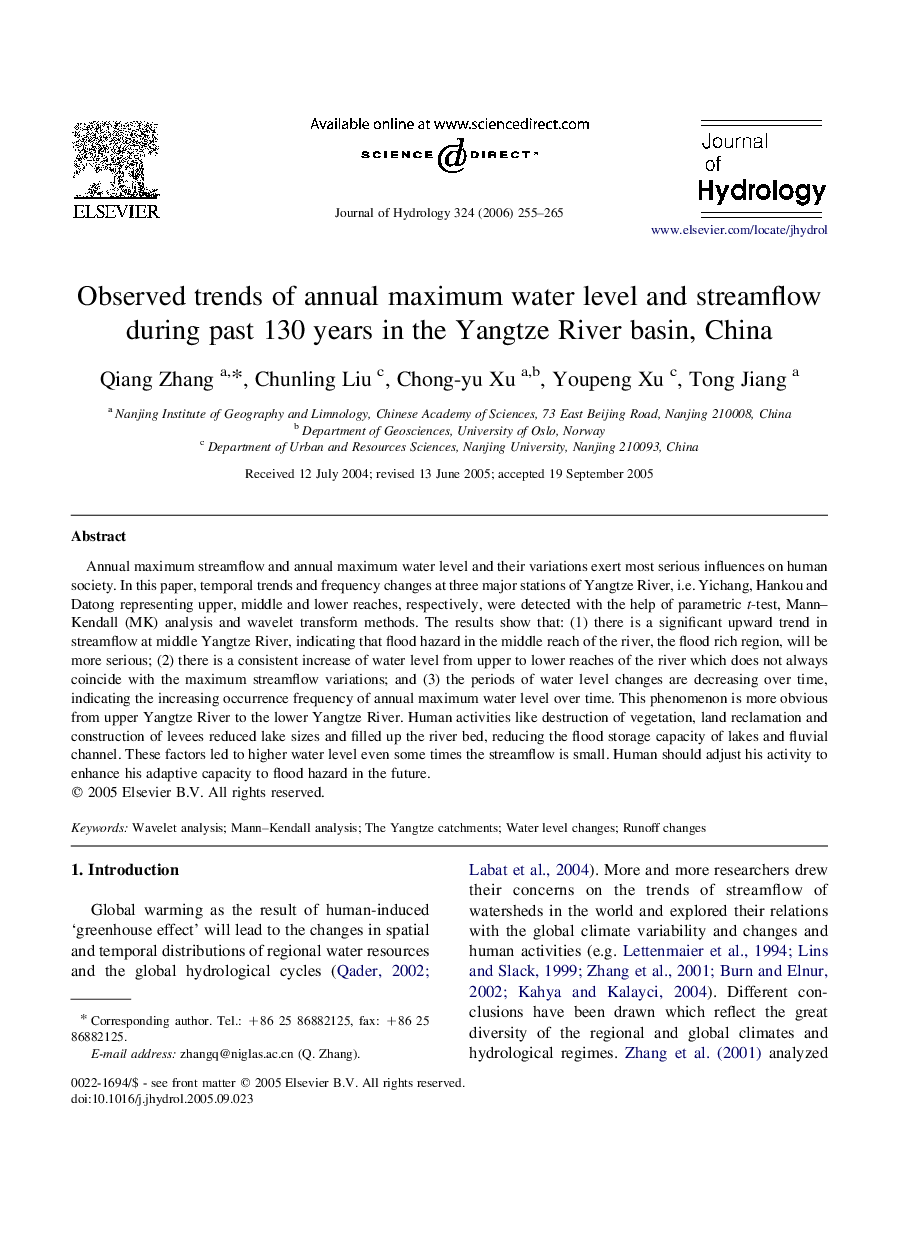| کد مقاله | کد نشریه | سال انتشار | مقاله انگلیسی | نسخه تمام متن |
|---|---|---|---|---|
| 4580396 | 1630164 | 2006 | 11 صفحه PDF | دانلود رایگان |

Annual maximum streamflow and annual maximum water level and their variations exert most serious influences on human society. In this paper, temporal trends and frequency changes at three major stations of Yangtze River, i.e. Yichang, Hankou and Datong representing upper, middle and lower reaches, respectively, were detected with the help of parametric t-test, Mann–Kendall (MK) analysis and wavelet transform methods. The results show that: (1) there is a significant upward trend in streamflow at middle Yangtze River, indicating that flood hazard in the middle reach of the river, the flood rich region, will be more serious; (2) there is a consistent increase of water level from upper to lower reaches of the river which does not always coincide with the maximum streamflow variations; and (3) the periods of water level changes are decreasing over time, indicating the increasing occurrence frequency of annual maximum water level over time. This phenomenon is more obvious from upper Yangtze River to the lower Yangtze River. Human activities like destruction of vegetation, land reclamation and construction of levees reduced lake sizes and filled up the river bed, reducing the flood storage capacity of lakes and fluvial channel. These factors led to higher water level even some times the streamflow is small. Human should adjust his activity to enhance his adaptive capacity to flood hazard in the future.
Journal: Journal of Hydrology - Volume 324, Issues 1–4, 15 June 2006, Pages 255–265